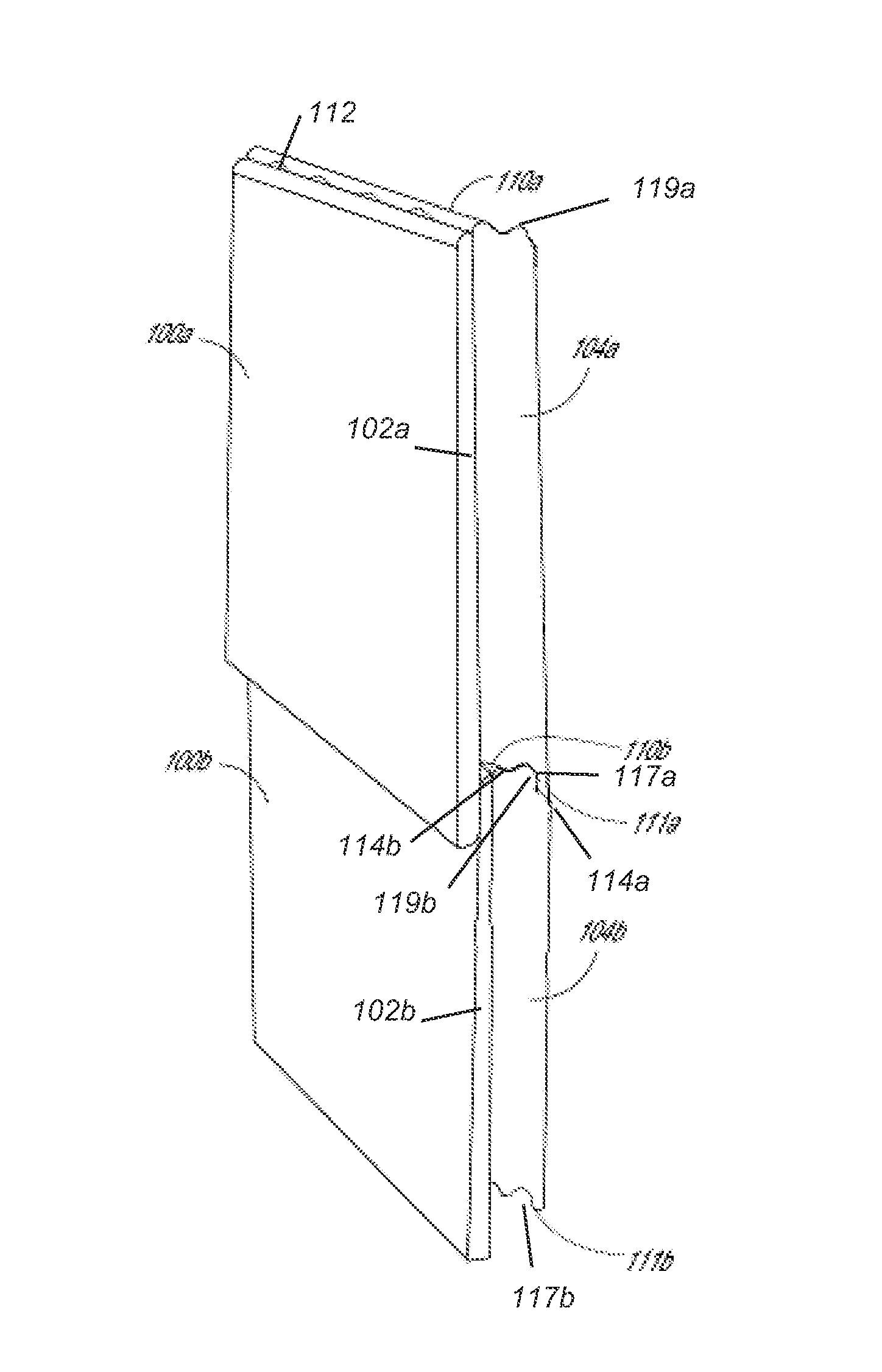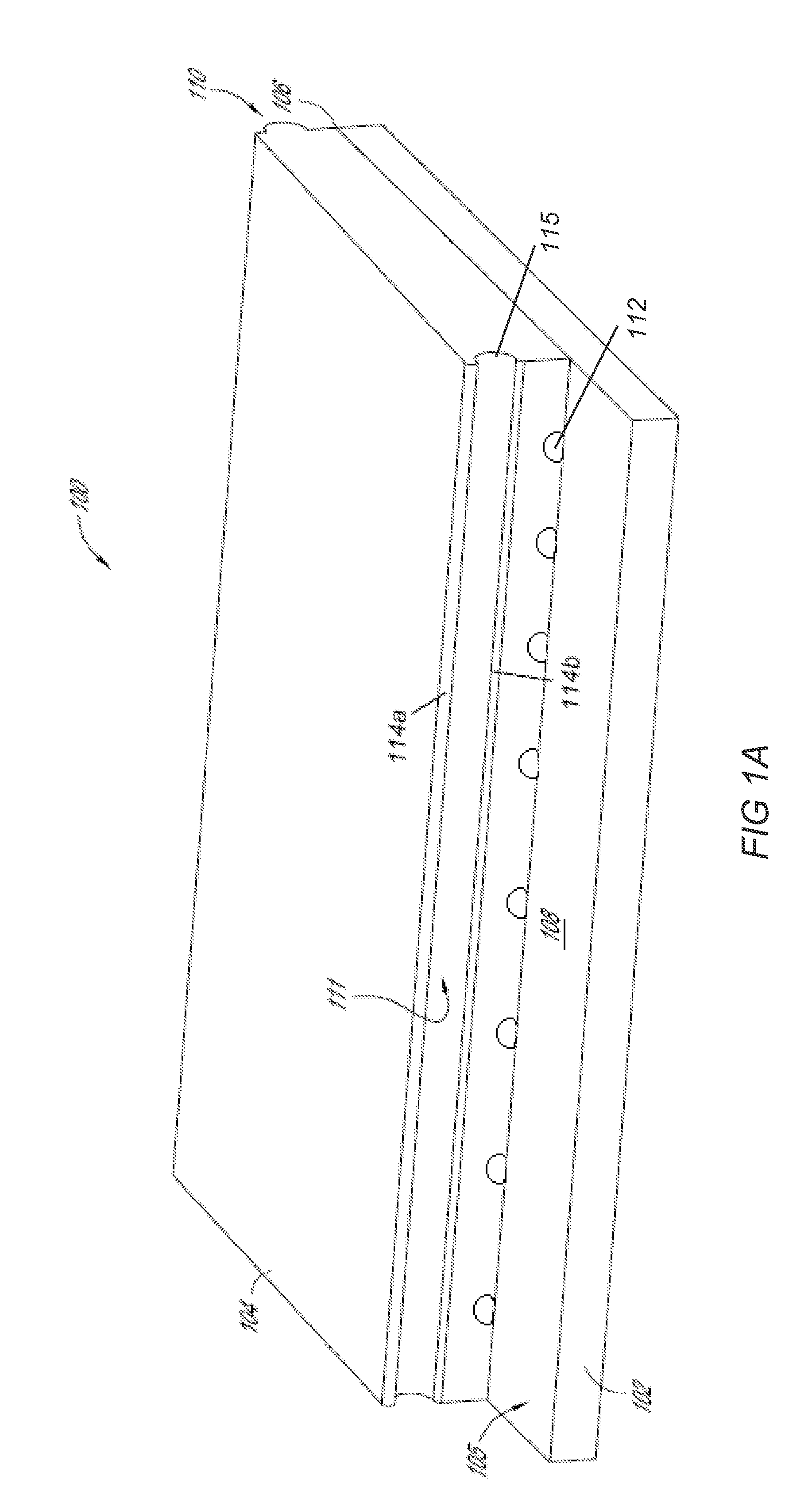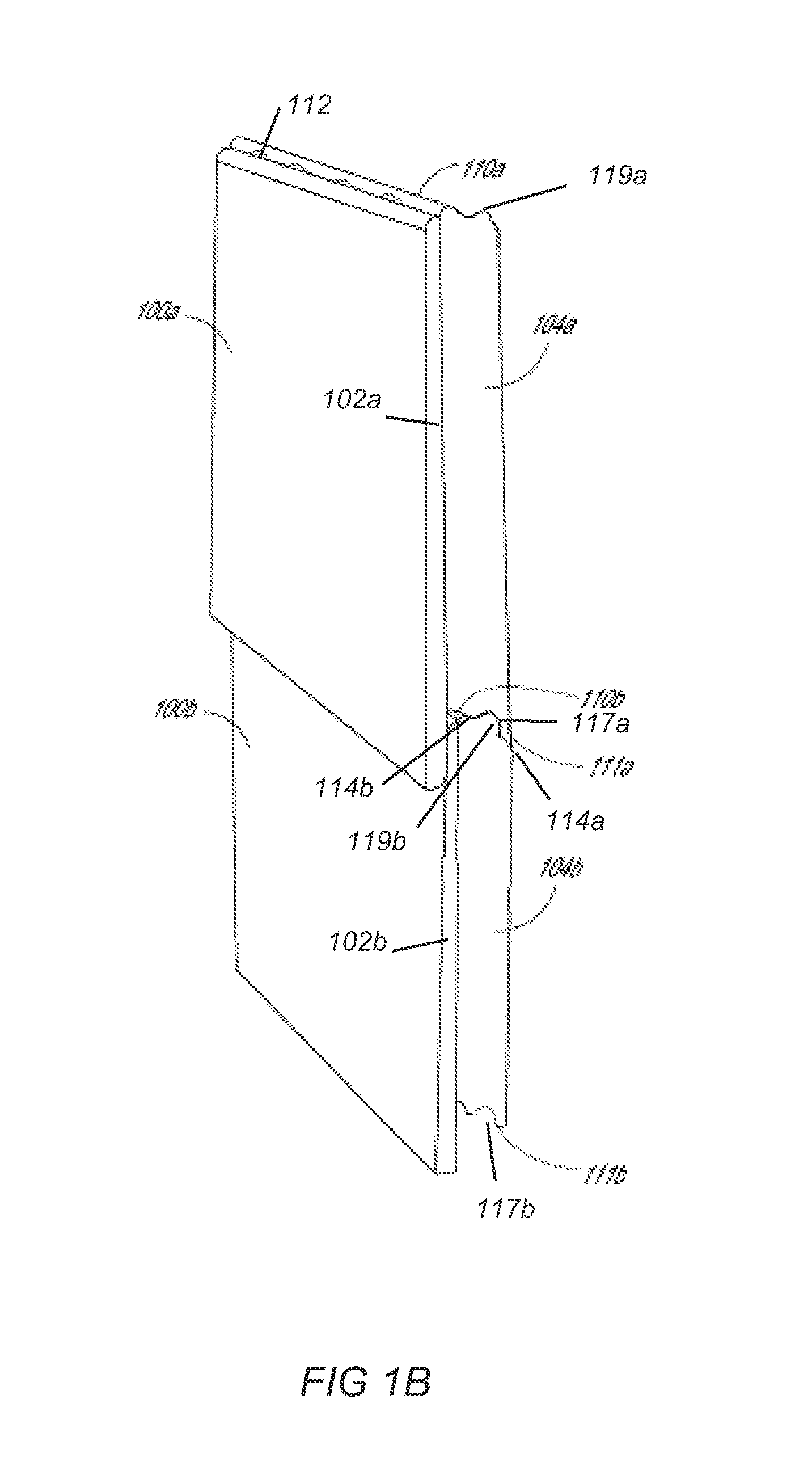Integrated fiber cement and foam as insulated cladding with enhancements
a technology of insulating cladding and fiber cement, which is applied in the field of composite fiber cement cladding, can solve the problems of affecting the aesthetics, water management, other properties of the wall structure assembly, and the design of other components of the wall, so as to improve the insulation capacity of the cladding material, reduce the installation time, and increase the effect of wind load
- Summary
- Abstract
- Description
- Claims
- Application Information
AI Technical Summary
Benefits of technology
Problems solved by technology
Method used
Image
Examples
Embodiment Construction
[0039]References will now be made to the drawings wherein like numerals refer to like parts throughout. FIG. 1A illustrates an integrated fiber cement and foam insulation panel 100 configured for exterior siding applications in accordance with various embodiments of the present disclosure. The panel 100 generally includes a fiber cement layer 102 and a profiled foam layer 104 attached thereto. The fiber cement layer 102 can be in the form of a plank, a siding, a shingle, a strip, a trim board, or various other building components. In a preferred embodiment, the fiber cement layer 102 is configured as a siding used for exterior wall applications. The profiled foam layer 104 can be made of open-celled and / or closed-celled foam or other similar lightweight material with insulating material properties, such as polystyrene foam, mineral based foams, foamed cement or gypsum, phenolic foams, and aerogels. Additionally or alternatively, the profiled foam layer 104 may also comprise mineral ...
PUM
 Login to View More
Login to View More Abstract
Description
Claims
Application Information
 Login to View More
Login to View More - R&D
- Intellectual Property
- Life Sciences
- Materials
- Tech Scout
- Unparalleled Data Quality
- Higher Quality Content
- 60% Fewer Hallucinations
Browse by: Latest US Patents, China's latest patents, Technical Efficacy Thesaurus, Application Domain, Technology Topic, Popular Technical Reports.
© 2025 PatSnap. All rights reserved.Legal|Privacy policy|Modern Slavery Act Transparency Statement|Sitemap|About US| Contact US: help@patsnap.com



